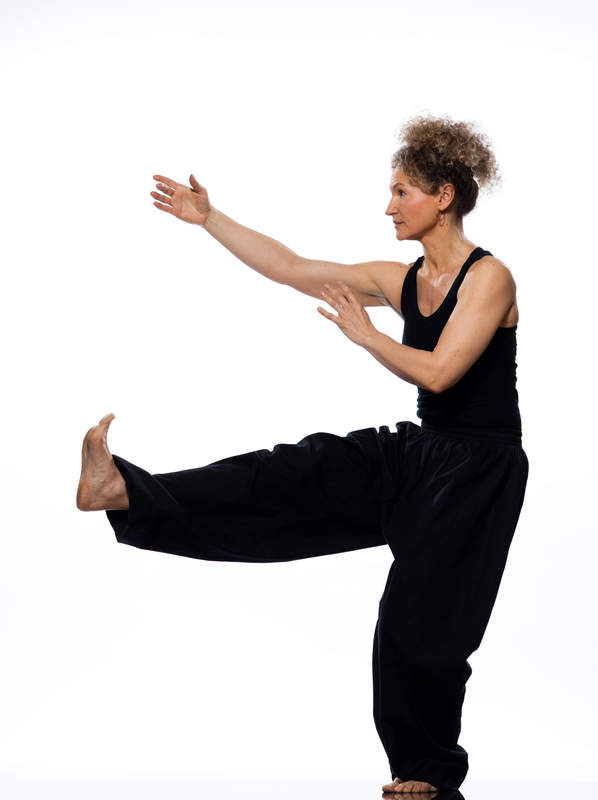With gratitude
We’ve been missing in action this week. I’ve been moving into a new home and my partner in crime, Bob LeDrew, has been cooking up a storm of ideas for Guyside.
For our American readers, wishing you a splendid, joyful Thanksgiving. And for the rest of our readers, we can never say thanks enough.
We’ll be back in action on Monday with Flashfree and in December with Guyside.
Cheers!
Read MoreWho are you wearing?
Labels. Our world’s full of them. And they are no more pervasive than when applied to women, particularly as we age and start to become invisible, not only to others but also to ourselves. In fact, I am becoming acutely aware that some of these labels have slipped into my vocabulary.
That’s why I’m beginning to more fully appreciate the move that Prince made years ago when he changed his name to a symbol and became “the artist formerly known as…”Granted, one can argue that it was a publicity move of epic proportions and it sure did garner a lot of attention. But at the same time, it also shifted control. Perhaps he became himself again.
On the brink of a major change, I am once again challenging myself to step outside the comfort zone that labels provide and consider if I am not one of the following, who am I?
- a middle-aged woman
- a Cougar
- menopausal
- a woman ‘of a certain age’
- an old maid?
Better yet? Who are you? Have you, like me, allowed yourself to slip into these labels like a comfortable pair of socks?
Our generation of women came of age on the tails of Gloria Steinem, Shirley Chisolm, Ann Richards and Bella Abzug, women who not only reinforced the message that we should live within our skins but, that we should do so proudly. And yet, many of us have shed that pride and as I wrote a few years back, have somehow stopped wearing ourselves, as if we’ve somehow crossed into the wardrobe of no return, where invisibility is safer than rebellion.
I’m certainly not going to start burning my bras or marching in Washington for older women’s rights (see, there I go again). But I am going to make damn sure that as I cross the threshold of a new home, I start wearing myself again.
What about you? Who are you wearing?
Read MoreGuyside: Get advocaty, dude
My forties have been a tumultuous time for me, healthwise. Essentially, I went from someone who had few problems physically or psychologically — at least ones I was willing to acknowledge, even to myself — to a rare diagnosis of bladder cancer, a bout of clinical depression, and some of the stresses and damages that go along with the clock.
I’ve lost a parent, a parent-in-law, and a number of friends. And one of the things that I’ve learned through my experiences and those of friends and loved ones is the value of being a self-advocate for your own health.
It’s not just a cliche that men don’t take care of themseves. It’s a fact. A 2011 article in Monitor on Psychology points out that not only do men take worse care of themselves than women, they are far less likely to seek health care out. That double whammy could contribute to men’s shorter life expectancy.
So how do we become better self-advocates?
First, we need to go to the doctor (or, in my case, the nurse practitioner), and we need to be more clear about why we’re there. A WebMD article tells the story of one man who visited Dr. Paul Haidet:
“A 50-year-old Boston dockworker with no serious illness in his past, the patient said the cough had been hanging on for three weeks. Haidet noted the details, performed a physical exam, and diagnosed an upper respiratory tract infection. “The guy had a cold,” Haidet tells WebMD. He recommended cough syrup and was about to leave, but something gave him pause. The patient “just had this weird look on his face,” Haidet recalls.
Haidet learned that the man’s best friend had recently died of lung cancer and when his friend was diagnosed, he had a very similar cough. As a longtime pack-a-day smoker, the patient was afraid his number was finally up.”
Second, do some research. I read a lot of stuff. And I try to read it critically, to understand the context. For example, if I read an article about a lawsuit over a bladder-cancer drug, I don’t have an immediate fear reaction; I learn the particulars. Be sure to use reputable sites like the Mayo Clinic, WebMD, the NIH, the AMA, or associations concerned with a disease.
3. When you’re in a doctor’s office or at a clinic, don’t just nod your head. Come in with questions, and be prepared to ask for clarification of terms or concepts that you don’t understand. The Agency for Healthcare Research and Quality has a great checklist of questions for tests. That’s just one resource you can use.
4. Be politely persistent. I recently was searching out a referral to a specialist. Turned out the referral was being sent to the wrong place by my family practice. If I hadn’t been persistent in asking, who knows how long it might have taken to make it work. Because I discovered the error by checking with both sides of the transaction, I was able to ensure the connection was made, reducing my wait time.
These are just a few things we can do. If you’re looking for more ideas about self-advocacy, check out these resources:
- Seven Counties’ Introduction to Health Policy and Advocacy
- Be Your Own Health Advocate by WebMD
- The Center for Advancing Health
- “Be The Squeaky Wheel” by Care2
And remember: As of January 2014, Guyside will now be taking over the Wednesday Bubble slot, and if you’ve got something to say around the topics of men, health, and aging, we want to know. If you are interested in contributing, drop us a note at flashfree111@gmail.com.
Read MoreDepression: the silver lining
I’ve written about depression quite a bit on Flashfree. Not only is age a risk factor among women (with the highest reported levels in women between the ages of 40 and 49) but, the risk of depressive symptoms may be as much as three times higher among women across the menopausal years compared to women who have not yet reached menopause. Moreover, the risk may be more than twice as likely among women who’ve never had depression previously.
However, there is a silver lining: researchers are reporting that in some women, particularly those who experience depressive symptoms for the first time around the time of menopause, depression will eventually dissipate over the eight years following the final menstrual period. In fact, this was proven true in over 200 women whose symptoms were evaluated over a 14 year period around menopause. In this group, depression scores were significantly higher the 10 years before their final period and then decreased roughly 12% per year after their final menstrual period. For women with a history of depression, the odds were not quite as favorable; these women were 13 times likelier to develop depressive symptoms around menopause, and may be as much as 8 times likelier than other women to have recurrences of the blues in the years following the final menstrual period.
The researchers note that women who have greater variability in their levels of FSH — follicular stimulating hormone — may be more likely to develop depressive symptoms during menopause. However, the quicker that these levels change, the more likely a woman is to move past the depression as she gets further into menopause.
The old adage, ‘this too, shall pass,’ may be quite true when it comes to depression during menopause. For women whose history overrides the FSH factor, a reduction in stress, psychotherapy, low doses of SSRIs and a boost in physical activity may help to keep things in balance, especially overall wellbeing.
Read MoreWednesday Bubble: No mystique, just perseverance
 Time for another menopause downer…followed by some good news! First the downer: declining levels of estrogen during menopause tend to reinforce a decline in the body’s ability to naturally metabolize blood fats and its ability to fight off the ravages of oxygen-free radicals, you know, free roaming oxygen ions that can wreak havoc on the immune system. The result is often an upsurge in heart and other metabolic diseases. You can read more about those conditions here.
Time for another menopause downer…followed by some good news! First the downer: declining levels of estrogen during menopause tend to reinforce a decline in the body’s ability to naturally metabolize blood fats and its ability to fight off the ravages of oxygen-free radicals, you know, free roaming oxygen ions that can wreak havoc on the immune system. The result is often an upsurge in heart and other metabolic diseases. You can read more about those conditions here.
Okay, so the good news: it appears that Tai Chi training may help increase the body’s antioxidant defenses in both pre- and post-menopausal women! In fact, in a study published a few years ago in the Journal of Aging Research, investigators noted a marked change in antioxidant markers normally related to aerobic exercise, as well as a decline in a marker for heart disease risk.
For those of you unfamiliar with Tai Chi, it is an ancient Chinese martial art form that combines breathing with smooth, gentle postures. It may look fairly tame, however, having studied Tai Chi for a short period of time, I can assure you that it’s damn hard. Moreover, despite appearances, it is a weight-bearing exercise that not only strengthens muscles but also is on par with moderate intensity aerobic exercise. It has also been shown to improve mobility, flexibility and balance, improve sleep and overall wellbeing, and even enhance the circulation of blood through the smallest of blood vessels.
I’ve written about the effect of breathing on stress and the body’s stress markers. However, it appears that when Tai Chi is combined with slow and deep breathing exercise (i.e. 6 breaths per minutes) overall benefits are boosted. Indeed, two, 75-minute Tai Chi sessions a week combined with two hours of at home practice appeared to do just what the doctor ordered. These sessions involved 10 min of warm up/stretching, 60 minutes of Tai Chi (45 minutes 18-posture Tai Chi and 15 min Tai Chi Fan Style) and an initial check in period. In addition to the slow, rotational, fluid movements (1.5 minutes per motion), the women participating in the study were taught to control their breathing. Over the eight weeks, they also underwent blood and had physical fitness evaluations.
The findings? Tai Chi training improved balance, flexibility and leg extension strength in all of the women regardless of menopausal status. LDL cholesterol was also lowered. And, as mentioned, markers for antioxidant activity increased significantly while a marker for heart disease risk decreased.
Tai Chi is low impact and is especially valuable for women who may not be physically able to boost their aerobic routines. What’s more, once mastered, it can be practiced in the privacy of one’s own home. Once again, the mind-body connection proves to be pretty darn cool and important to health and wellness! This time, it might take some practice but perseverance rules the day! “There is no mystique to Tai Chi Chuan. What is difficult is the perseverance. It took me ten years to discover my chi, but thirty years to learn how to use it. Once you see the benefit, you won’t want to stop.” – Ma Yueh Liang
Read More









